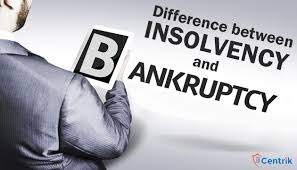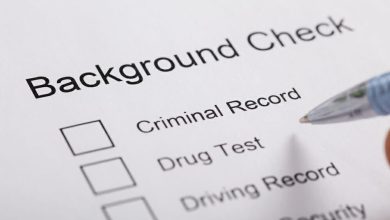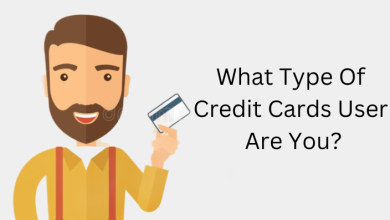
The words ‘bankrupt’ and ‘insolvent’ are ones that are frequently misused. It’s occasionally used to imply ‘ broke’ or bankrupt when these terms have two distinct meanings. A person who is bankrupt is insolvent but being insolvent does not necessarily result in bankruptcy. The words also have various
What is bankruptcy, and what does it entail?
Bankruptcy is a legal procedure. When an individual is no longer able to pay off their obligations, they can file for bankruptcy. You may either petition the court yourself or have your creditors declare you bankrupt if you owe them more than £5,000. A judge will then declare you bankrupt, allowing you to seek debt relief from some or all your obligations.
Although a Chapter 7 bankruptcy is one way for people to resolve their debt, it does not apply to limited firms or partnerships. It relieves the burden of an individual since, once you’ve been bankrupted, your creditors can no longer collect payment from you, charge interest, or take further legal action against you. Any possessions you have will be used to pay off your obligations in a controlled manner at the end of your bankruptcy period (which typically lasts about a year), but any remaining debts can be written off to provide you with a new start at the end of it.
An example of bankruptcy
Joe works in a bank. He is doing well at his job, so he decides to acquire a vehicle on credit. However, after a few months, the bank decides to cut hundreds of jobs, and Joe is out of work. Joe tries hard for over a year to locate new employment. He takes out an overdraft to cover the auto purchase, but his expenses begin rising rapidly. He relies on his credit card to get by, but before he knows it, he has amassed too much debt and no longer has access to money to pay it off. He decides to file for bankruptcy as creditors call him all day long.
Joe fills out an online form, describing his finances and full inventory of assets. The official receiver is a government employee who works for the Insolvency Service. The official receiver interviews him about the circumstances that brought on bankruptcy after reviewing the application.
After Joe’s trustee files the bankrupting document, which is reviewed by the receiver and accepted, all of Joe’s assets are seized and sold to pay creditors. Joe’s name will be added to the Individual Insolvency Register and his bankruptcy will be recorded for six years. After a year, Joe is relieved of his bankruptcy status, and all his outstanding debt is forgiven.
When should I file for bankruptcy?
Although bankruptcy may assist you with debt relief, it is not a decision to make hastily. It has an impact on your daily routine, you risk losing precious assets, and your credit score will be impacted for years. You also cannot apply for a mortgage until at least six years have passed and you can no longer act as a company director until you are discharged.
Depending on your personal situation, bankruptcy may or may not be the best debt solution for you. It’s essential to seek advice if you have substantial debt and are thinking about bankruptcy. A debt counsellor will provide non-judgemental guidance as well as possibilities for dealing with debt that you didn’t know existed. Debt advisor services are completely free.
What is bankruptcy, and how does it work?
Insolvency is a condition of financial distress. You can no longer pay your obligations when they come due if you’re insolvent (hence, you’re insolvent when filing for bankruptcy). An individual or a firm can be called insolvent; however, the term is most often utilized to refer to companies.
In one of two ways or both at the same time, a business may become insolvent:
- You have enough available cash to cover your obligations, but you don’t have any liquid assets.
- Your firm’s liabilities exceed its assets (liquid and illiquid).
Examples of insolvency
It isn’t only simple people who fall into bankruptcy. It might start with something as innocent as:
- You may overspend or discover that clients are behind in their payments
- You’ve just lost your business contract with a customer you relied on.
- Customers may move to a different product or your service could become irrelevant as needs and markets change.
Unanticipated and unrecorded expenditures, such as litigations, can also lead to bankruptcy. If you’re sued, your company will have to pay large damages, which might be financially devastating if you don’t have enough insurance.
What is the difference between bankruptcy and insolvency?
Looking at these examples, the main differences between bankruptcy and insolvency include:
- Bankruptcy is a legal procedure or court order, whereas insolvency is a state of financial distress.
- An individual may file for bankruptcy under either Chapter 7 or 13, but there are other types of insolvency.
- It is not the only option for dealing with financial distress.
- Insolvency applies only to individuals and sole traders with unlimited responsibility. Businesses, as well as people, can be insolvent.
What precautions can I take to avoid bankruptcy and insolvency?
It’s critical to understand what causes bankruptcy and insolvency so you can spot early warning signals and act before debt builds up. Prudent bookkeeping and budgeting may help you stay on top of your money flow while maintaining personal and business insurance is a good idea. Even a healthy company facing bankruptcy could be brought down by poor financial management.
You could have a lot of assets and a successful custom business, but you might still be insolvent. Insolvency does not imply that you are bankrupt – it means that you are unable to pay your obligations when they become due. You may discover, for example, that the only way to settle your debt is to sell off critical elements of your company – which will obviously be impossible if you wish to continue operating.
It’s also beneficial to have an accountant on your side who can handle your finances and keep track of your balance sheet if you’re a small company owner. Running a business takes up a lot of time and attention, so making mistakes when you’re rushing to do it all under pressure is conceivable. Hiring someone to take care of your books reduces the chance that you’ll become insolvent in the first place.
How can I prevent my company from going bankrupt or becoming insolvent?
Get in contact with a specialist accountant if you are on the verge of bankruptcy or insolvency. This will most likely be a tough and emotionally draining experience for you, with many difficult decisions to make. However, it does not have to signal the end of your business. An accountant may assist you in finding the best answer based on your company’s needs. This might include refinancing or restructuring your debt, establishing a company voluntary agreement, or assisting you through the bankruptcy procedure.
Every year, many people and businesses confront this problem, and there are a variety of options for resolving it. You can emerge from bankruptcy with a stronger foundation for future development if you use the proper technique and professional assistance.
If you need assistance with taking the next steps in dealing with your companies finances, why not contact Irwin Insolvency today for further advice.




